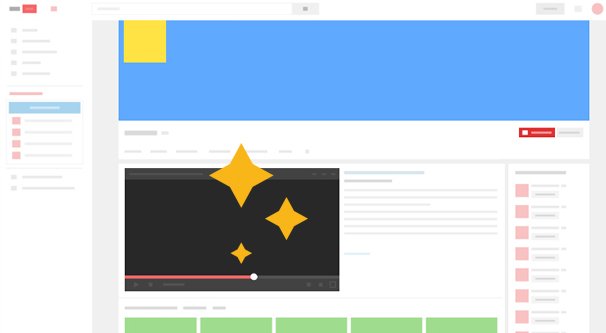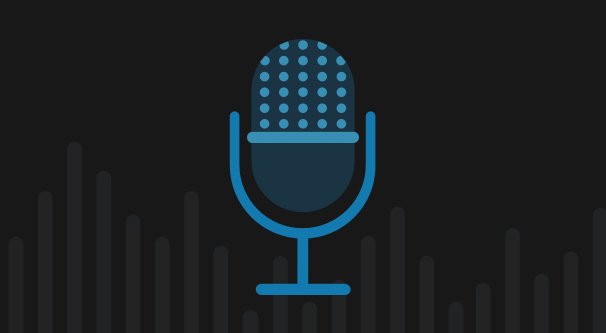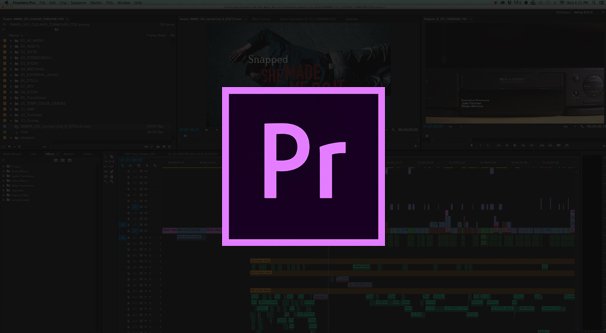 Written by ContentPowered.com
Written by ContentPowered.com
YouTube can be a great platform for content creators, but it’s also harsh and unforgiving. You are completely at the mercy of both the audience and the greater algorithm, and if either one turns on you, your entire account can lose 50% or more of its value overnight.
That’s for the future, though; when you’re first starting out, you have some high hurdles to leap. You need to build up your account from the ground up. You need to establish a consistent publication schedule. You need to produce content and grow an audience. You need to reach certain milestones before you can even begin to monetize your channel, and then you have to navigate the minefield of demonetization.
Where do you even begin? How can you create a new channel and build it into something people want to watch? Here are my five primary tips.
1: Focus on Quality over Quantity
YouTube is home to something like eight hundred trillion videos and all of them suck.
Okay, so I’m exaggerating a bit here, but only a bit. YouTube is an immense platform, and with 300 hours of new video being uploaded every minute to the site, you have to do some serious work to stand out. You’ll notice that only two kinds of videos ever see the light of day; the ones that are extremely good and well produced, and the ones that are short viral clips. Since you can’t necessarily replicate viral memetic success on the fly, you have to focus on the quality aspect.

I know there are a lot of creators who figure the shotgun approach is the best. They try to make a new video every day, and sometimes even multiple videos per day, and their quality level is middling at best. Sometimes you get the unedited, stream of consciousness vlogs. Sometimes you get unedited video gameplay footage while a mostly-silent nerd sniffs and makes bland jokes at key moments. Sometimes you get someone trying to replicate the success of a major creator, but without the production values. Sometimes you get something completely off the wall.
My point is, it’s generally better to have one high-value video than 100 low-value videos. 100 videos with 10 views each is nothing. Anyone can do that. The algorithm won’t touch those videos and, generally, won’t touch the account. Meanwhile, one video with 10,000 views will hit the algorithm and gain mass circulation, resulting in tens or hundreds of thousands of views with relative ease.
That’s what you’re aiming for. A few good videos hitting the algorithm means a ton of exposure, a ton of engagement, and an influx of subscribers with every new post.
It’s all well and good to just say “quality over quantity” but what do I mean by that exactly? That’s what the other four tips are about, really.
2: Invest in Quality Recording Hardware
Every good YouTube video begins with good source material. I don’t care if it’s animation, live action, or a mixture of both. The best videos all have high quality source material to work with. In fact, a simple five minute video could have as much as half an hour or more of source video to pull from.
Depending on the style of video you’re going for, the hardware you may need will vary. For example, if you’re just doing computer animation, you need professional software like Blender, Maya, or 3DS Max. If you’re going to be recording live action, you need a high quality video camera, good microphones, lighting equipment, and any number of other accessories.

Now, sure, you can get away with just a HD webcam and a decent microphone if you’re doing at-the-desk vlogging, but even that you need decent equipment. It can be very beneficial to have an audio mixer, a separate video capture device, a professional quality video camera, and lighting equipment.
To be honest, I really can’t stress this enough: the number one thing separating semi-professional videographers from amateurs is lighting. A good light source, a diffuser, and a cultivated atmosphere go a long way.
Since the hardware required varies a lot, you should know what kind of video you want to produce before you invest in the hardware. It does you no good to spend $1,000 on a camera if you’re just going to have your webcam-style face overlay on a video game screen.

Regardless, here are some resources you can read:
- Adorama’s Guide to Basic Video Equipment – This guide covers different kinds of cameras, microphones, tripods, and lighting equipment. It’s not very detailed, but it gives you an idea of what the options are.
- VideoCreator’s List of Tools I Use – This is a list of tools used by a professional Youtuber and video specialist. Some of it will be overkill for someone just starting out, but it’s a good idea of what a professional setup might entail.
- BorrowLenses’ Top 15 Cameras for YouTube – This is a top list of different cameras you can consider using for YouTube.
- TurboFuture’s Guide to YouTube Audio – This is a guide to different styles of audio equipment and what you might need for what purpose.
Since YouTube is such a huge niche, it should come as no surprise that there are hundreds of content creators explicitly focused around helping other people create content on YouTube. As such, there are tons of other articles and even video tutorials for pretty much every aspect of hardware setup. If you have a question, it’s trivial to Google something and get a well-researched answer.
3: Learn Your Way Around Video Editing Software
Well edited videos require editing skill. You can hire someone to do this for you, but it’s easier for everyone involved if you learn the skills yourself. Of course, there are as many techniques for editing as there are video producers out there, so a huge part of it comes down to practice and learning your own style.
The first thing I would recommend is completely ignoring YouTube’s built-in video editing options. They’re good enough for simple cuts and basic adjustments, but beyond that, they fall flat. You really want some kind of professional video editing software.

There are a whole bunch of options, like:
- Adobe Premiere – Part of Adobe’s creative suite, Premiere is, well, the premier video editing app out there. It’s robust and fully featured, and since it’s now part of a monthly fee app suite, it’s a lot cheaper to use than it used to be. The only downside is that it’s incredibly overwhelming if you have no idea what you’re doing. I hope you’re down to read tutorials!
- CyberLink PowerDirector – CyberLink is one of those brands that is a common name in its arena but unknown outside of it. Their video editing suite is powerful and capable, and it’s one of the few that supports VR footage, if that’s a niche you want to dig into.
- Magix Movie Edit Pro – While this isn’t one of the top of the line video editing suites out there, it still has plenty of features for most Youtubers. It also supports VR and multi-cam editing, which can be very helpful for some of you.
- Apple Final Cut Pro – One of the best Apple-based video editors out there, Final Cut is a truly professional-level app and is one of the best options out there. On the other hand, it uses a strange format for timeline editing and it’s quite expensive in comparison to others on this list.
- AviSynth – This is one of the stranger kinds of video editors out there, because it doesn’t load, edit, and render videos. Instead, you basically write some code to process a video file. This makes it very easy to adjust your editing, and it’s fairly intuitive for those of you who are familiar with programming, but it’s still a very strange and non-traditional editor. Love it or hate it; you won’t find a place in between.
You can also check lists like this one from PC Magazine or this one from Creative Bloq for other recommendations. Suffice it to say there are dozens of video editing programs out there to choose from.
4: Optimize Your Videos for Search and SEO
A huge part of success on YouTube is the same as success on a blog or website; SEO. However, with YouTube, you have to optimize for two different search engines.

You have Google and their web search, which will find relevant YouTube videos and include them in the search results if necessary, and you have the internal YouTube search engine itself. Here’s what you should do to each video you post:
- Do your keyword research. This is the same as with blog writing; you need to target the appropriate kinds of keywords to appear in relevant searches. Google is sophisticated, but so is your competition. Read up on the topic.
- Use relevant keywords in your video tags. YouTube is one of the few locations on the web that still lets you just plug in some tags for your content and actually obeys them, so make sure you’re using that field.
- Write a high quality video title. A good title helps catch the eye. Make sure it’s short enough to not be truncated.
- Write a lengthy video description with all of the value you want users to see. This includes keywords, but it also includes links to additional resources, further explanations, disclosures, and anything else relevant to the video.
- Upload a video transcript. This helps YouTube index the actual content of the video, as well as assisting the hearing impaired to get value out of your video that isn’t derived from the notoriously inconsistent autocaptioner.
- Upload a compelling thumbnail. Your thumbnail is a huge driver of traffic, engagement, and exposure. It’s an art unto itself.
- Encourage comments and subscriptions in your video and description. Comments drive the algorithm, and subscriptions are about the only way to ensure that your followers see your videos regularly.
- Make use of playlists for related videos. Playlists help your videos show up for users who are interested in the subject, and can become a source of ongoing retention that is very beneficial to your account.
There’s more to it, but these are the primary points you want to hit to make the most out of your videos. For more information, you can read this post by Brian Dean or this post on HubSpot.
5: Create and Upload Content Regularly
Much like blogging, you want there to be fresh content for your users on a regular schedule. I know I promoted quality over quantity, but you need to balance this with a regular flow of content.
I strongly recommend getting into the habit of working on videos at least an hour each day. Even if you’re only publishing content once a week, working on it daily gets you in the habit of creating it, and means you don’t fall into a rut of not making anything, letting your channel languish, and losing your subscribers.

Depending on the depth of your content, the length of your videos, and the quality of what you’re producing, you may opt for one of a few different schedules. Here are a few popular channels you can use as examples of different modes of success.
- HBomberguy is a gamer turned social activist who posts videos on average once every two or three months. His videos end up nearly an hour long on average, and they include deep analysis, organized thinking, and a level of social commentary you don’t get from shorter, more casual videos.
- BosnianBill is a locksmith who has created and grows a community surrounding lockpicking and locksport. He publishes videos nearly every day, and while their average view count is relatively low, the consistency means his audience always has something new to watch.
- Good Mythical Morning is a channel taking the concept of a morning talk show and bringing it to a millennial audience. They’re extremely successful and publish new content on a daily basis.
- Scam Nation is a channel that produces videos somewhere in the middle of the above. They’re a little less frequent, averaging a couple per week, and while they can go in-depth with some topics, they aren’t overly long. They take as long as they need to cover their topic, which is usually explaining a scam or magic trick.
Picking a schedule and sticking to it is important, and I highly recommend building a backlog of content whenever possible. It’s a lot easier to stick to a publication schedule if you have a few months worth of content ready to go at any given time.